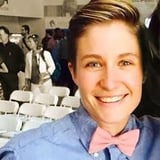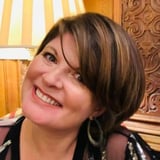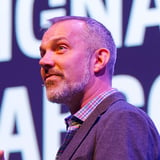Summary
In his talk, Dave Gray uses metaphors like the enterprise elephant and the blind men to describe how different perspectives in an organization create competing realities. Drawing on the concept of the ladder of inference from Chris Argyris, he explains how experiences, attention, theories, judgments, and beliefs form a self-sealing logic that organizations and individuals unconsciously reinforce. Lou Gerstner's story of IBM’s turnaround illustrates the need to see beyond siloed views. Dave emphasizes that beliefs drive behavior and that without understanding underlying beliefs and needs, efforts to change or get buy-in will fail. He shares powerful stories, such as Adrian’s misunderstanding of a team member’s late working hours, illustrating how testing assumptions through conversation helps break false beliefs. Dave highlights the risks of executive isolation using the “monkey tree” metaphor, where information is filtered upward, reinforcing distorted realities. He advocates for empathy and active outreach by leaders to break bubbles through direct engagement with customers and teams. Drawing on examples from Catherine Courage and Alyssa Briggs, he shows how creating safe spaces—via warm tea, cookies, or field trips—can foster trust and openness. Dave stresses the importance of double-loop learning and acting as if alternative beliefs are true as a way to test and shift organizational culture. He concludes with practical advice to assess people’s needs, understand behaviors, and design experiments to validate or revise beliefs, encouraging everyone to break autopilot routines and cultivate curiosity and openness.
Key Insights
-
•
Organizational culture is a self-reinforcing bubble shaped by shared beliefs that filter and distort reality.
-
•
People’s beliefs form through a ladder of inference: from experiences and attention to theories, judgments, and stories.
-
•
People rarely share their true beliefs openly, making understanding underlying needs critical to effect change.
-
•
Self-sealing logic protects existing beliefs by dismissing conflicting information and rationalizing contradictory evidence.
-
•
Senior leaders are especially vulnerable to distorted realities due to filtered information and lack of direct engagement.
-
•
Breaking patterns and assumptions requires curiosity, experimentation, and acting 'as if' alternative beliefs are true.
-
•
Creating safe spaces using simple acts like sharing warm tea or cookies can build trust and surface genuine needs.
-
•
Empathy for others, including leaders, helps support breakthrough out of limiting belief bubbles.
-
•
Small courageous acts, such as breaking dress codes or challenging routines, can build reputations and open new possibilities.
-
•
Double-loop learning—examining and revising underlying beliefs—is needed to overcome resistance and foster real organizational change.
Notable Quotes
"If you do anything with other people, you’re creating culture."
"The enterprise feels like a big elephant; different people touch different parts and argue what it really is."
"Beliefs are habits of action; they are the rules that guide how we decide to act."
"People don’t share their beliefs; you have to search for and understand them to get true buy-in."
"The higher up you are in an organization, the more distorted your reality is likely to be."
"It’s impossible to be angry with a warm cup of tea in your hand."
"The only way to get outside your bubble is to act as if an alternative belief is true and test it."
"Change only happens in the present moment, not the past or future."
"Most enterprises are not emotionally safe places; people can’t just leave emotions at the door."
"You lie to yourself more than anyone else; the lie is that you are completely rational and objective."
Or choose a question:
















More Videos

"Non-researchers running their own research can produce mediocre results if they lack operational support and guidance."
Ned Dwyer Emily Stewart James WallisThe Intersection of Design and ResearchOps
September 24, 2024

"The biggest bottleneck is the bureaucracy, like the Paperwork Reduction Act, we have to creatively navigate that."
Michael LandEstablishing Design Operations in Government
February 18, 2021

"The first organization to solve accessibility for new modalities like AR/VR will gain a massive, lasting advantage."
Sam ProulxTo Boldly Go: The New Frontiers of Accessibility
November 18, 2022

"The UX academy gave non-designers 20% of their time to learn and practice user experience methods."
Vasileios XanthopoulosA Top-Down and Bottom-Up Approach to User-Centric Maturity at Scale
January 8, 2024

"Digital channels now have higher standards—customers expect personalization at all times."
Andrew Custage Michael MallettThe Digital Journey: Research on Consumer Frustration and Loyalty
March 29, 2023

"Some teams were going rogue or skipping research altogether."
Marjorie Stainback Kelsey KingmanTransforming Strategic Research Capacity through Democratization
October 24, 2019

"Connection is the energy that exists between people when they feel seen, heard, and valued."
Alla WeinbergCross-Functional Relationship Design
December 6, 2022

"Before sharing insights, I try to prime the room by acknowledging feelings and starting fresh."
Jerome “Axle” BrownHow to Use Self-Directed Learning to Ensure Your Research Insights are Heard and Acted Upon
March 11, 2021

"If you want to have tattoos, you can have tattoos and show them."
Jen Crim Jess Quittner Saritha Kattekola Alex Karr Gurbani PahwaCulture, DIBS & Recruiting
June 11, 2021
















